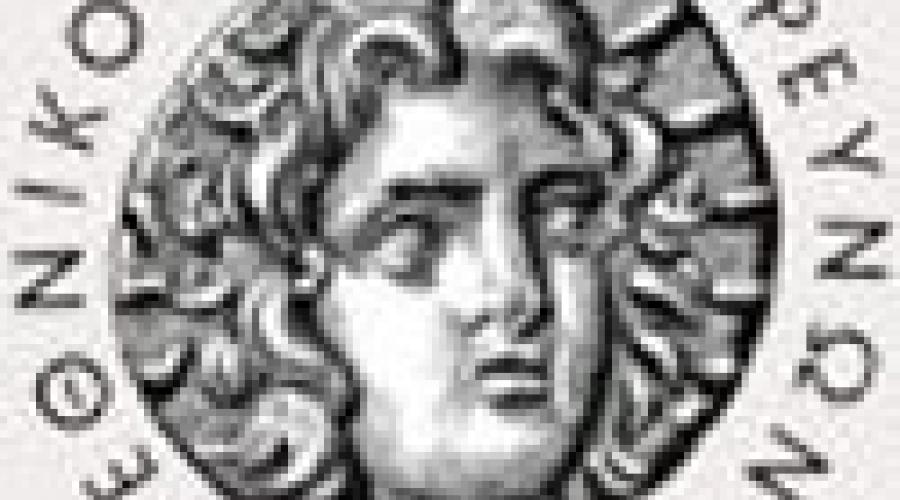
Thirty-five research centres, universities and enterprises interactively presented the results of their research activities during the 'Science and Technology Week' organised for the second consecutive year by GSRT in Athens (Zappio Megaro) from 28 June to 5 July 2006. Visitors had the opportunity to be informed of the latest achievements, products and activities of research and scientific agencies, and also to understand the role of science and technology in daily life.
Meanwhile, in specially designed rooms, the public had the chance to listen to conferences and discussions, in which distinguished scientists were participating, regarding a wide range of subjects: the environment- climate, Technology in Education, Culture and Technology, Research and Technology in Health, the Mediterranean Diet - Research and Tradition.
The special space for the exhibition 'Travelling with Light' won the attention of visitors of all ages. The exhibition consisted of a tour through the world of light and the exciting applications of new optical technologies and lasers. The goal of the exhibition, organised by the Foundation for Research and Technology-Hellas, the Max Born Institute for Nonlinear Optics and Short Pulse Spectroscopy, and the VDI Technology Centre, was to present to the public, and more specifically to youth, a series of experiments/demonstrations, which didactically reveal the secrets of light.
Importantly, during the week, a plenary meeting of the Network of Women Researchers, 'Periktioni', took place. This network is coordinated by GSRT and intends to promote equal opportunities in Research and Technological Development (R&TD) with the support of specific measures for the effective utilisation of women in the research workforce and the embodiment of the genders dimension in R&TD policies.
At the closing ceremony of the 2nd 'Science and Technology Week', Development Minister D. Sioufas awarded the 12 enterprises that presented innovative ideas and distinguished themselves in the context of the 'Technogenesis' programme, created by the Region of Eastern Macedonia and Thrace. Mr Sioufas mentioned the successful organisation of the Science and Technology Week which is, from now on, will take place every year. He underlined the fact that many of the innovative exhibits on display are already being applied or are soon to be applied, such as the template system 'Hippocrates-MST' for the early diagnosis of breast cancer.
Regarding the 'Technogenesis' programme, the General Secretary of the Region of Eastern Macedonia and Thrace, Mihalis Angelopoulos, who was present at the closing ceremony, noted that 'it was an initiative aiming at mobilising productive forces in the region, on the one hand, and to act as a catalyst for local initiatives related to innovation in new products and services on the other. From 300 template proposals submitted, 70 were chosen, for which an entrepreneurial plan for their development was elaborated. Finally the 12 most prevalent and hierarchically advanced proposals will be financed with 800,000 euros in order for them to enter the course of materialisation'.
Notably, the goal of the 'Technogenesis' programme, with a total budget of 3.69 million euro, was the enhancement of innovative entrepreneurial activity at the regional level including the creation of new investments and the development of a Regional Network of Innovation, with the participation of production agencies, educational institutions, research centres and enterprises.
Achievements, Services and Products of the National Hellenic Research Foundation
For the second time, the National Hellenic Research Foundation (NHRF) successfully participated in the Science and Technology Week. The Foundation organised a series of concurrent events (speeches, discussions, viewing of scientific documentaries, exhibitions, updated issues of printed information material).
At the NHRF kiosk, the Foundations research work was presented, with a focus on innovative actions arising from its Institutes research programmes and exhibiting applications of modern technology in environmental, historical or cultural issues. Moreover, visitors could get informed on the activities and services of the National Documentation Centre, such as the digital library, which provides access to a large number of scientific data bases and electronic journals as well as the information and support services for research programmes and the transfer of technology.
A speech by Daniel Thomas, Professor of the Engineering school of Compiegne and Chairman of the 'French Industry Pole of Competitiveness' was organised as one of the NHRF events. The subject of the speech was 'Pole of Competitiveness. Industries and Agroresources in France: Biofuels, Biomolecules, Biomaterials'. The speech was followed by a round-table discussion with the subject: 'Bioenergy, Bioethanol, Biodiesel', coordinated by Franguisco Colissy, Professor at The NTUA (National Technical University of Athens) and Chairman of the Institute of Biologic Research and Biotechnology of the NHRF, where, among other things, the institutes research actions in the field of Industrial Biocatalysis/Biotechnology were presented.
The Head of the Development Department of the National Documentation Centre/NHRF, Dr Paraskevi Sachini, gave a lecture on the scientific information services of the National Documentation Centre, which proved particularly interesting. These information services use new Information and Communication Technologies, among other things, the search and retrieval of scientific information, the ordering of scientific publications and the development and availability of specialised thematic collections.
Another popular exhibition was 'Ceramics of the Mediterranean: Analysis-Restoration-Recovery of Lost Construction Techniques with Updated Physico-chemical methods: Presentation of the CERAMED project', including a DVD screening. The European project CERAMED, coordinated by the Theoretical and Physical Chemistry Institute of the NHRF, concerns the study, recovery and dissemination of the ancient and traditional ceramics productions in the greater Mediterranean area. Geographically, it covers an area from the strait of Gibraltar to the Dead Sea, and timewise, from the 8th century B.C. up to the 18th century A.C.
Through the study of five representative types of decorated ceramics (Ancient Greek ceramics, Terra Sigillata, Majotica, Iznik and Nabataean ceramics), the researchers attempted to retrace the manufacturing know-how of ceramics, with the goal of reproducing museum-quality copies of ancient, historic ceramics and of manufacturing high quality ceramics in modern times using ancient techniques and materials. At the NHRFs kiosk, 6 ceramic reproductions of the five types of decorated ceramics found around the Mediterranean (Greece, Spain, Morocco, Turkey, Jordan) that arose from the CERAMEDs research were showcased.
'Modern Greek Depicting Portraiture: 10,000 Portraits on the Internet' was the subject of the lecture of Triantafillos Sklavenitis, Chairman of the Institute of Neohellenic Research/NHRF. His speech included a DVD screening regarding the collection of 10,000 portraits in digital form of Greeks who distinguished themselves in all aspects of life, from the Capture of Constantinople to the present day (excluding persons still alive).
The goal of this project-which is a part of the Pandektis project of the NHRF (Operational Programme 'Information Society')- is to create a body of portraits as inclusive as possible which, following the processing that will take place, will become a completed source/series for neohellenic studies. The 10,000 digital pictures and the database that will accompany them will be available on the web at the end of 2006. Furthermore, the portraits for which the NHRF will have obtained the rights will be available at high resolution so that users can copy them. On the contrary, portraits for which the NHRF does not have the rights will be provided at low resolution so that the user can utilise the information and request a higher resolution copy from the museum, library, agency or owner who has the original.








